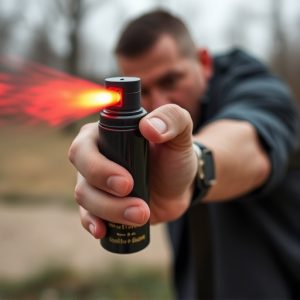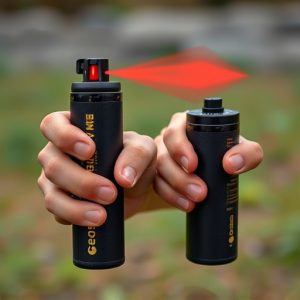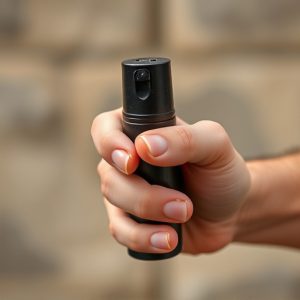Guiding Legal Use of Pepper Spray for Riot Control: Composition, Safety, and Carrying Tips
This text provides a guide on learning and complying with laws regarding the legal carrying of peppe…….
This text provides a guide on learning and complying with laws regarding the legal carrying of pepper spray for riot control. It emphasizes understanding local regulations, including classification, quantity limits, storage rules, and permitted uses, which vary significantly across jurisdictions. Key practices highlighted include consulting legal experts, staying informed on legislation, undergoing training, obtaining certifications, prioritizing safety, following specific guidelines for storage and usage, and employing de-escalation strategies to ensure safe crowd control while adhering to legal requirements on how to legally carry pepper spray.
In the realm of crowd control, inflammatory spray, or pepper spray, serves as a powerful tool for law enforcement and security personnel. This article delves into the science behind this potent agent, exploring its composition and immediate effects. We also navigate the legal landscape surrounding its possession and use, providing insights on how to legally carry pepper spray. Additionally, safety measures and best practices are highlighted to ensure responsible and effective deployment in various crowd control situations.
- Understanding Pepper Spray for Riot Control: Its Composition and Effects
- Legal Considerations: When and How to Carry Pepper Spray
- Safety Measures and Best Practices for Using Pepper Spray in Crowd Control Situations
Understanding Pepper Spray for Riot Control: Its Composition and Effects
Pepper spray, a potent riot control agent, is a widely used tool by law enforcement and security personnel worldwide. Its primary composition includes capsaicin, a chemical derived from chili peppers, which when inhaled or comes into contact with skin, triggers a burning sensation and temporary incapacitation. This non-lethal weapon has proven effective in disperting crowds and managing civil disturbances.
To legally carry pepper spray for riot control, understanding its classification and regulations is crucial. In many jurisdictions, pepper spray falls under specific categories of restricted items, with varying restrictions on quantity, storage, and use. Knowing local laws and obtaining the necessary permits are essential steps before considering it as a personal defense mechanism or for law enforcement purposes.
Legal Considerations: When and How to Carry Pepper Spray
When considering how to legally carry pepper spray for riot control, it’s crucial to understand that regulations vary significantly from one jurisdiction to another. Before deploying any such substance, law enforcement agencies and authorized personnel must familiarize themselves with local, state, or national laws governing the use and possession of pepper spray. These laws outline when, where, and how pepper spray can be legally carried and used.
Carrying pepper spray without proper authorization can result in severe legal repercussions, including fines and imprisonment. To ensure compliance, individuals or agencies planning to utilize pepper spray should consult with legal experts and stay updated on any changes in legislation. Proper training and certification are also essential. This includes understanding the specific types of pepper spray allowed for law enforcement use, their strengths, and safe application methods. Adhering to these guidelines ensures that the use of pepper spray is both effective and legally sound.
Safety Measures and Best Practices for Using Pepper Spray in Crowd Control Situations
When utilizing pepper spray for riot control, safety is paramount. Law enforcement agencies and security professionals must prioritize officer and public safety above all else. Before deploying any form of crowd control measure, including pepper spray, it’s crucial to familiarize yourself with local laws and regulations regarding its use and possession. Knowing how to legally carry pepper spray is essential; ensure you have the necessary permits and licenses, adhering to specific guidelines for storage, transport, and usage.
Best practices dictate that officers receive adequate training in pepper spray application techniques, ensuring minimal exposure and targeting specific areas like the eyes and face. It’s also vital to maintain proper distance from individuals to minimize cross-contamination and reduce the risk of accidental inhalation. Regular maintenance and inspection of equipment are critical to guarantee sprayers function correctly and consistently deliver the intended dose. Additionally, having a clear de-escalation strategy in place can help avoid unnecessary pepper spray use, fostering safer crowd control operations.
Pepper spray, a powerful tool in riot control, requires careful consideration and responsible use. Understanding its composition, effects, and legal implications is crucial for effective crowd management while adhering to safety protocols. By following best practices for deployment and learning about local regulations on how to legally carry pepper spray, authorities can ensure public safety without infringing on civil liberties. These measures highlight the importance of a balanced approach in managing volatile situations, making it a valuable asset in maintaining order during riots or large gatherings.


